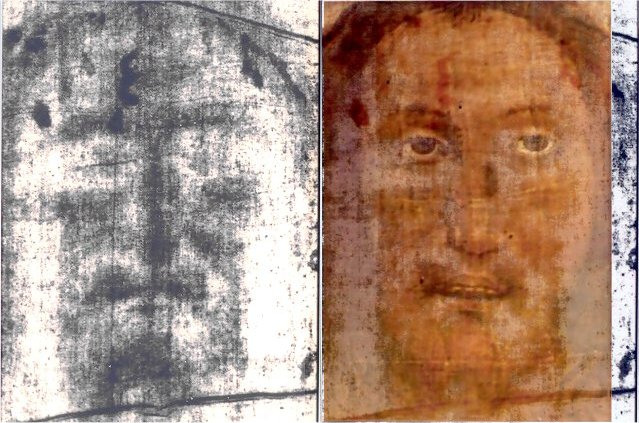The Face of Jesus: From that Gaze, the Human Person

To read Cardinal Sean O'Malley's introduction to this exhibit:
The exhibit retraces the events of the most ancient portraits of Christ, called acheiropoietos (i.e., not hand-made) and, in particular, of the Veil of Manoppello, Italy, visited in 2006 by Pope Benedict XVI during his first papal trip. Recent studies have re-opened the question of whether this veil, because of its unique features, might be the one used by Veronica to wipe Jesus' face on His way to Calvary.
The exhibition provides evidence both of the desire to see God's face, which is typical of the Old Testament and runs through the history of the Church, and of the deep bond between this desire and the certainty of the Church Fathers that Christ left his portrait to us as a gift.
Through the exhibition the history of the acheiropoietos portraits of Christ - authoritative models of a face with unmistakable features - is traced through the East and the West.
Particular attention is given to the Roman relic called the 'Veronica', the famous "veil" on which Christ himself left an impression of his face, according to tradition. The devotion to 'our Veronica', as Dante called it, the goal and prize of medieval pilgrimages to St Peter's in Rome, is witnessed to by countless reproductions along the pilgrims' way: "at the time when many people go to see that blessed image which Jesus Christ left us as an imprint of his most beautiful countenance" (Dante La Vita Nuova).
The memory of this face began to fade in the 16th century, and yet there is still deep nostalgia for it in modern times: "Mankind has lost a face, an irretrievable face, and all have longed to be that pilgrim — imagined in the Empyrean, beneath the Rose — who in Rome sees the Veronica and murmurs in faith, “Lord Jesus, my God, true God, is this then what Thy face was like?” (J. Borges, Dreamtigers)
In September 2006, Pope Benedict XVI's visit to the Sanctuary of the Holy Face in Manoppello brought public attention back to Christ's face, "whose mysterious gaze has never ceased to rest on all men and women, and on all peoples."
The Holy Face, which has been preserved in the Abruzzi region for four centuries, is the only existing portrait on a veil, and it is inexplicable how it can have been painted on both sides while its thread appears to be transparent. The image seems to be one with the cloth, yet when the observer's gaze is at right angles to the fabric, i.e. head-on, the image vanishes.
The transcription of the Historic Account of the veil's arrival in the region, written in the mid-1600s by Fr. Donato da Bomba, was completed for the exhibition. The account is confirmed by the first findings of historical research in the State Archives in Naples and Chieti, carried out in collaboration with the Capuchin Friars who are the custodians of the Holy Face. The exhibition, however, does not aim to resolve all the questions that the enigmatic veil poses. Its intent is rather to recreate that familiarity with the face of Christ which has been lost in the West, and encourage awareness of what this sign of His presence might mean.
Veronica Route
Many of the images of the exhibition have been found thanks to Veronica Route, an online research project which aims to discover what the Roman Veronica was like, by attempting to order its numerous reproductions historically and geographically.
The idea is to continue the research of the English mathematician Karl Pearson, published in the volume Die Fronica in 1887. Pearson ended his work thus: "In our epoch, in which scholars trace sagas from India to Iceland, I hope my attempt to describe the origin and development of a story which has exercised such a huge influence on the literary and figurative works of our fathers for the last three centuries will not be considered superfluous."
The Veronica images, sent from as far away as the mediaeval town of Turku in Finland, have brought about a secondary, unexpected result: the discovery of how great the desire in Europe has been to see the Face of Christ.
Curators:
Emanuele Colombo, Michele Colombo, Paolo Martinelli OFMCap, Paola Francesca Moretti, Giovanna Parravicini, Maria Cristina Terzaghi, Raffaella Zardoni.
With help from: Paul Badde, Arianna Petraccia, Heinrich W. Pfeiffer S.J., Davide Rondoni, Marco Rossi, Silvana Tassetto, Paola Vismara.
With the patrocinium of: The Franciscan Institute of Spirituality Pontifical University Antonianum; The Order of Friars Minor; Province of Pescara; Syndicate Association “Cult and Culture in the Abruzzo Region. The Way of Thomas the Apostle.”



